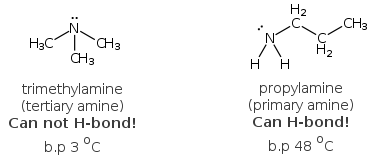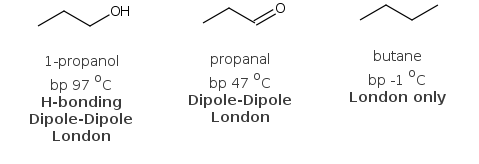- 1. Getting Started
- 2. Organic Chemistry 101
-
3. First Semester Topics
-
Structure and Bonding
- Chemical Intuition
- Difficulty-in-organic-chemistry
- Atomic Orbitals
- Electron Configurations of Atoms
- Practice Time - Structure and Bonding 1
- Lewis Structures
- Drawing Lewis Structures Guide
- Valence Bond Theory
- Hybridization
- Polar Covalent Bonds
- Formal Charge
- Practice Time - Structure and Bonding 2
- Curved Arrow Notation
- Resonance
- Electrons behave like waves
- MO Theory Intro
- Rules of Thumb
- Structural Representations
- Acids/Base and Reactions
- Functional Groups
- Alkanes and Cycloalkanes
- Stereochemistry
-
Alkenes and Addition Reactions
- Application - BVO (Brominated Vegetable Oil)
- E/Z and CIP
- Stability of Alkenes
- H-X Addition to Alkenes: Hydrohalogenation
- Practice Time - Hydrohalogenation
- X2 Addition to Alkenes: Halogenation
- HOX addition: Halohydrins
- Practice Time - Halogenation
- Hydroboration/Oxidation of Alkenes: Hydration
- Practice Time - Hydroboration-Oxidation
- Oxymercuration-Reduction: Hydration
- Practice Time - Oxymercuration/Reduction
- Oxidation
- Reduction
- Alkynes
- Alcohols and Alkyl Halides
- Aliphatic Substitutions (SN1/SN2)
- Dienes, Allylic and Benzylic systems
-
Structure and Bonding
-
4. Second Semester Topics
- Arenes and Aromaticity
-
Reactions of Arenes
- Electrophilic Aromatic Substitution
- EAS-Halogenation
- EAS-Nitration
- Practice Time - Synthesis of Aniline
- EAS-Alkylation
- Practice Time - Friedel Crafts Alkylation
- EAS-Acylation
- Practice Time - Synthesis of Alkyl Arenes
- EAS-Sulfonation
- Practice Time - EAS
- Effect on Rate and Orientation
- Donation and Withdrawal of Electrons
- Regiochemistry in EAS
- Practice Time - Directing Group Effects
- Steric Considerations
- Synthesizing Poly-substituted Benzene's
- NAS - Addition/Elimination
- NAS - Elimination/Addition - Benzyne
- Alcohols and Phenols
-
Ethers and Epoxides
- Intro and Occurrence
- Crown Ethers
- Preparation of Ethers
- Reactions of Ethers
- Practice Time - Ethers
- Preparation of Epoxides
- Reactions of Epoxides - Acidic Ring Opening
- Practice Time - Acidic Ring Opening
- Reactions of Epoxides - Nucleophilic Ring Opening
- Practice Time - Nucleophilic Ring opening
- Application - Epoxidation in Reboxetine Synthesis
- Application - Nucleophilic Epoxide Ring Opening in Crixivan Synthesis
- Naming Ethers and Epoxides
-
Aldehydes and Ketones
- Naming Aldehydes and Ketones
- Practice Time - Naming Aldehydes/Ketones
- Nucleophilic addition
- Addition of Water - Gem Diols
- Practice Time - Hydration of Ketones and Aldehydes
- Addition of Alcohols - Hemiacetals and Acetals
- Acetal Protecting Groups
- Hemiacetals in Carbohydrates
- Practice Time - Hemiacetals and Acetals
- Addition of Amines - Imines
- Addition of Amines - Enamines
- Practice Time - Imines and Enamines
- Application - Imatinab Enamine Synthesis
- Addition of CN - Cyanohydrins
- Practice Time - Cyanohydrins
- Application - Isentress Synthesis
- Addition of Ylides - Wittig Reaction
- Practice Time - Wittig Olefination
- Carboxylic Acids and Derivatives
- Enols and Enolates
- Condensation Reactions
- 5. Spectroscopy - NMR, IR and UV
- 6. Mass Spectrometry
-
7. General Chemistry
- Significant Figures
- Practice Time! Significant Figures
- Spreadsheets - Getting Started
- Spreadsheets - Charts and Trend lines
- Standard Deviation
- Standard Deviation Calculations
- Factor Labels
- Practice Time! - Factor Labels
- Limiting Reagent Problem
- Percent Composition
- Molar Mass Calculation
- Average Atomic Mass
- Empirical Formula
- Initial Rate Analysis
- Practice Time! Initial Rate Analysis
- Solving Equilibrium Problems with ICE
- Practice Time! Equilibrium ICE Tables
- Le Chatelier's
-
8. Organic Chemistry Lab
- 9. General Chemistry Lab
- 10. Named Reactions
-
11. Reagents
-
12. Question Of The Day
- 13. Tutorials
- 14. Ask a Question
Clear History
Quick Menu
Hydrogen Bonding is a Verb!
Well maybe its not always used as a verb, but one molecule can hydrogen bond to another. Hydrogen bonding as well as dipole-dipole and London dispersion forces are all forces (actions) between two separate molecules. To say that a molecule has a hydrogen bond would be in error. Molecules can hydrogen bond with another molecule. It typically takes at least two or more molecules to hydrogen bond.
Intermolecular versus Intramolecular forces
Intermolecular forces, sometimes called secondary forces are between two molecules. Remember that an interstate highway goes from one state to another just as intermolecular forces are from one molecule to another. Intramolecular means within one molecule. Intramolecular forces are bonds (covalent, polar covalent, etc).
Intermolecular forces of most importance to organic chemists typically include the following.
- Hydrogen bonding (Strongest at about 1/10 strength of a covalent bond)
- Dipole-Dipole interactions
- London dispersion interaction (weakest - maybe 1/100 of a covalent bond)
Hydrogen bonding is the strongest of these three, while London dispersion forces are the weakest. Simply knowing the ordering of the strength of these forces and mechanistically how they work can help you make a lot of predictions in chemistry (and help you earn an A).
Predictions overview
- Molecules that can hydrogen bond will have higher boiling points (bp) and melting points (mp) than similar compounds that can not hydrogen bond.
- Molecules that can do dipole-dipole would have higher bp and mp than molecules that can only do London dispersion.
- Molecules that can hydrogen bond with water will typically be soluble in water.
- Molecules that can not hydrogen bond will typically be soluble in other compounds that can not hydrogen bond.
Hydrogen Bonding
For hydrogen bonding to occur the molecule must have O-H or N-H bonds. For example ammonia and water both can hydrogen bond with themselves and with each other. Any time you see a structure with OH or NH you must think "Hydrogen Bonding".

Draw the hydrogen bonding interaction between a water molecule and an ammonia molecule?
Notice how one molecule behaves as the hydrogen bonding donor and one molecule the hydrogen bonding acceptor.
Tertiary amines like trimethyl amine have low bp/mp than primary and secondary amines since they can not hydrogen bond.
 Dipole-Dipole
Dipole-Dipole
Hydrogen bonding is really just a strong dipole-dipole interaction. Most other dipole-dipole interaction forces are weaker than hydrogen bonding. For a molecule to undergo dipole-dipole interactions with another molecule it must be polar. Any molecule with a unsymmetrical distribution of heteratom (i.e. O, N, Cl, Br, I) could be polar. For a molecule to be polar one end must clearly have more charge than the other. The ketone (acetone) is polar and therefore can do dipole-dipole and London but not H-bonding. Acetone is polar by virtue of its highly polarized C=O double bond. Using resonance we can illustrate the polarity of acetone.
Acetone has a similar molecular weight as 1-propanol but since it does not have any OH bonds it can not H-bond and therefore has a lower bp. Acetone can only do dipole-dipole and London which are both weaker than H-bonding.
The following example illustrates the effect of the different intermolecular forces on boiling point.

London Dispersion (instantaneous dipole - induced dipole)
All molecules can do London dispersion forces. London dispersion forces are the weakest of the intermolecular forces. When I learned about these forces my high school chemistry teacher required us to call them "instantaneous dipole - induced dipole" interactions. When I asked her why she proclaimed "because thats all you need to know to understand how it works". She was correct and I've never forgot how it works.
Here is a mental picture of how it works. Imagine the molecules collides into another molecule or its container and all of its electrons kind of slosh over to one side. This is an instantaneous dipole. The other molecule it collided into has all its electrons forced to its other side (the induced dipole). This is the strongest with larger molecules and atoms.
- Larger atoms and molecules have stronger London forces than smaller. The forces depend on the surface area.
- In a larger atoms, the valence electrons are, on average, farther from the nuclei and more shielded from the nucleus than in a smaller atom or molecule. They are less tightly held and can more easily form temporary dipoles.
- The ease with which the electron distribution around an atom or molecule can be distorted is called the polarizability.